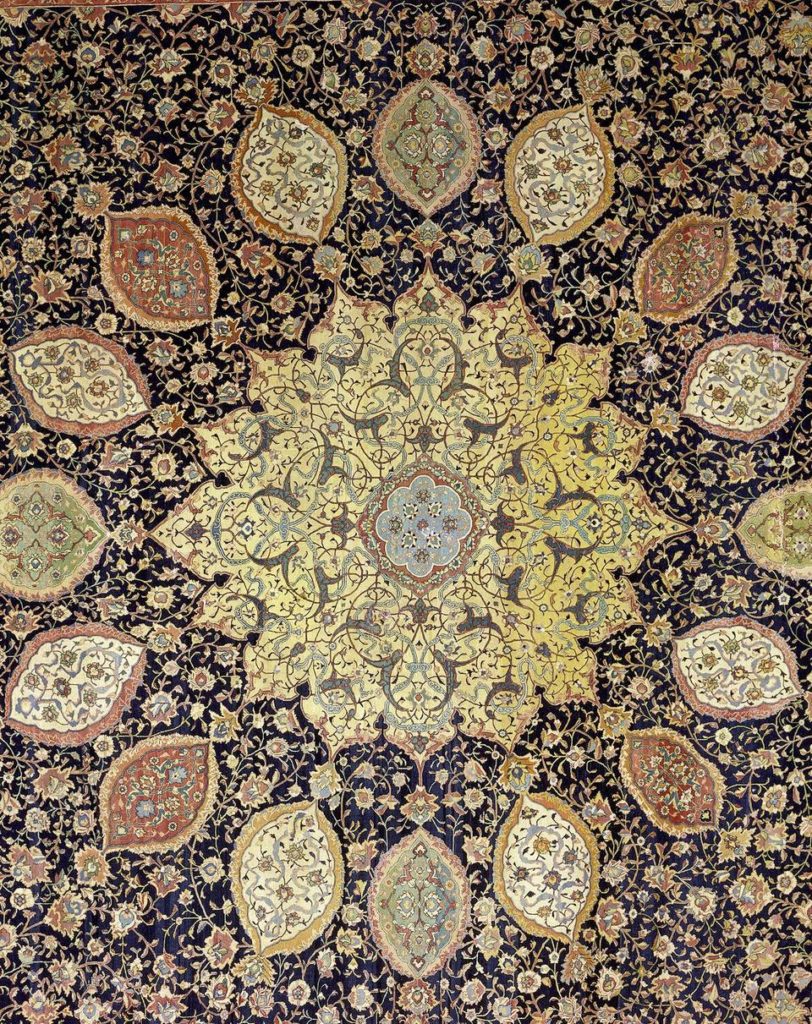The Ardabil (after a city in Iran) Carpet is the oldest carpet (1539-40) in the world and also one of the largest (10.5m x 5.3m). Its surface is covered by a single integrated design. The border is in the form of four parallel bands, which surrounds a rectangular field having a large yellow medallion in its centre. The medallion is surrounded by a ring of pointed oval shapes, and a lamp is shown hanging from either end. This centrepiece is matched by four corner-pieces, which are quarters of a similar but simpler composition, without the lamps.
The dyes used were made from natural materials like pomegranate skin and indigo, so the shades vary slightly, producing a ‘ripple’ effect where darker and lighter batches of wool were used. Each part of the design is filled with one or more types of scrollwork set with swirling flowers or leaves.
(Source: Victoria and Albert Museum, London)
Skip to content
